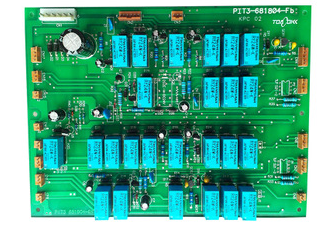1. Reduce patch pressure
Patch pressure is also an important cause of tin beading, which is usually not noticed by people. The influencing factors are mainly the setting of PCB thickness, the setting of component height and the setting of nozzle pressure of the placement machine during program production. If the pressure of the suction nozzle is too high during placement, it will cause the solder paste to be squeezed out of the pad or onto the solder mask under the component at the moment the component is attached to the PCB. These will be squeezed out of the pad. The solder paste will cause solder beads during reflow soldering. The editor believes that the solution to this problem is to reduce the pressure during mounting and avoid the solder paste being squeezed out of the pad.
The generation of tin beads is a very complicated process, because there are many reasons for the generation of tin beads,

so comprehensive consideration should be taken when solving or preventing the generation of tin beads. The absolute method is to do anti-tin bead opening treatment for the stencil of 0603 and above chip components, strictly regulate the storage and use of solder paste, regulate the design of the pad, adjust the appropriate patch pressure, and optimize the adjustment during the smt patch proofing stage. Good reflow temperature profile.
The principle of controlling the placement pressure is to "put" the component on the solder paste and press it down to a proper height. This proper height cannot squeeze the solder paste out of the pad. Regarding the impact of patch pressure on tin beads, we have made relevant verifications and found that reducing the patch pressure can effectively reduce the number of tin beads. Because the thickness of different suppliers, different models, and different packaging components are different, the patch pressure that needs to be controlled is also different. Pay attention to the smt patch proofing or processing and production, and adjust the patch pressure if necessary.
2. Optimize the pad design
When designing the pad, according to the size of the components used and the size of the soldering end, combined with the IPC standard, a pad (PAD) design standard suitable for production is developed to design the corresponding pad size. At the same time, it is necessary to ensure that the pads at both ends have A certain distance prevents the component body from pressing too much on the pad, so that the solder paste is squeezed out of the pad to form a tin bead. In addition, the thermal pad design should be done in PCBLAYOUT, so that both ends of the pad are heated evenly.
3. Improve the solderability of components and pads
The solderability of components and pads also has a direct impact on the production of tin beads. If the oxidation of components and pads is severe, the accumulation of excessive oxides on the metal plating will consume some flux, insufficient soldering and wetting, and the formation of tin beads. Therefore, it is necessary to ensure the quality of incoming materials for components and PCBs.
Practice has proved that in the current smt reflow soldering process, if you select the appropriate solder paste and standardize its use, optimize and control the smt production process, such as the stencil opening design, the control of the patch pressure, etc., it is completely possible to eliminate solder. The production of beads may reduce the probability of tin beads production to a lower level.